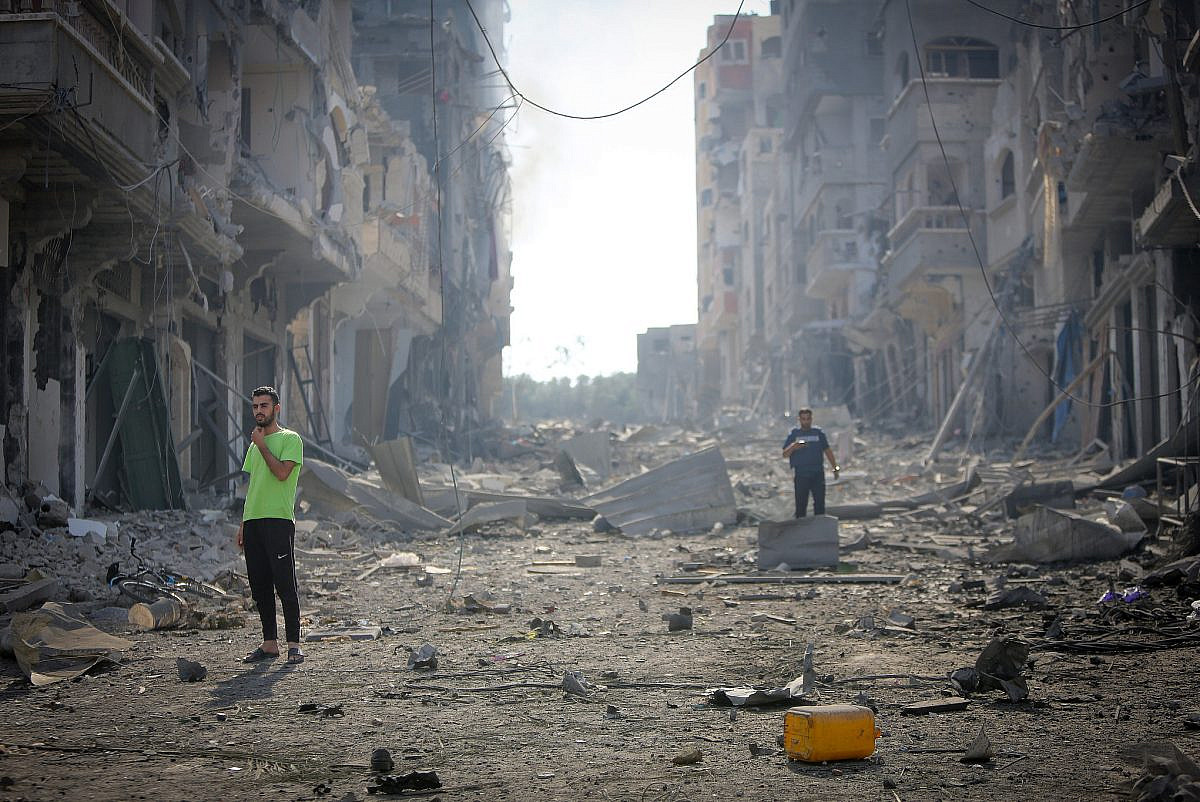Before Oct. 7, calm prevailed in the northern Gaza Strip, where over 416,000 people lived in the area north of Gaza City. Despite the lack of infrastructure, frequent power blackouts, poor economic conditions, and high unemployment rates, this relative tranquility persisted in cities from Jabalia to Beit Hanoun and Beit Lahia, and the Bedouin village known locally as Um a-Nasir.
After the Hamas attack on Israeli communities surrounding Gaza, Israel’s army responded by bombing large areas across the strip, dramatically changing the face of these northern cities. And no matter where they are in the strip, Palestinians are facing devastating shortages as Israel withholds supplies of food, water, electricity, fuel, and humanitarian and medical equipment. The trickle of aid that has arrived following U.S. mediation has barely been a drop in the ocean.
This perilous situation — coupled with Israel’s orders for Gazans in the north to flee south — forced many residents to leave, while the temporary entry of Israeli tanks into northern Gaza last night is adding to speculation that the army’s full ground invasion will not be delayed much longer.
Israel’s bombardment of northern Gaza has been particularly devastating for Jabalia camp, the Gaza Strip’s largest refugee camp, which covers an area of over half a square mile and has a population of more than 116,000 people. Despite the threats from Israel and the lack of essential services, however, some residents are still insisting on staying put, and are trying to adapt to the current situation and resist attempts to displace them.
‘There are no safe areas in Gaza’
Yousef al-Nadi, 43, lives with around 20 displaced relatives who sought refuge in his modest home, trying to escape the shelling that targeted a large group of houses in the overcrowded camp. They lack all basic necessities, and they are unable to flee to the southern areas in Gaza due to fuel running out and there being almost no transportation as a result.
“My house is not isolated from the Israeli bombardment,” al-Nadi said. “Neighboring houses only a few meters away were subjected to direct shelling. Women and children cannot sleep during the night due to their fear and panic, while the sounds of shelling are more frequent and intense at night.”

The arbitrary shelling of houses in the camp is among the things that haunt al-Nadi the most. There are effectively no safe houses in the camp; when Israel wants to destroy a home, all the surrounding houses in a large area are affected and liable to collapse on top of their residents. Some of the houses crack and become uninhabitable. Residents can often be seen walking on top of the rubble of houses scattered over large areas covering the camp’s roads.
Despite the already dire circumstances, al-Nadi expects the situation to worsen. “With the Israeli threat to launch a large-scale ground operation in the Gaza Strip, things seem to be getting more difficult,” he said. “The situation will become harder for the population in general and may cause many casualties among unarmed civilians.”
This suffering is no different from the bitter reality experienced by Rasheed al-Balbisi, 67, also from Jabalia camp, who lives with 29 family members. He had returned to his home in the camp three days before I spoke to him from Rafah in Gaza’s south, where he had initially fled with his family after Israel warned the residents of northern Gaza to flee southward.
“When my family and I were displaced, we rented a small pickup truck usually used for transporting cooking gas pipes to take us to the southern Gaza Strip,” said al-Balbisi. “After a few days of staying in a relative’s house, I preferred to return to my home, due to the intensity of the shelling in the southern area as well as the lack of basic services such as water, electricity, and communications.
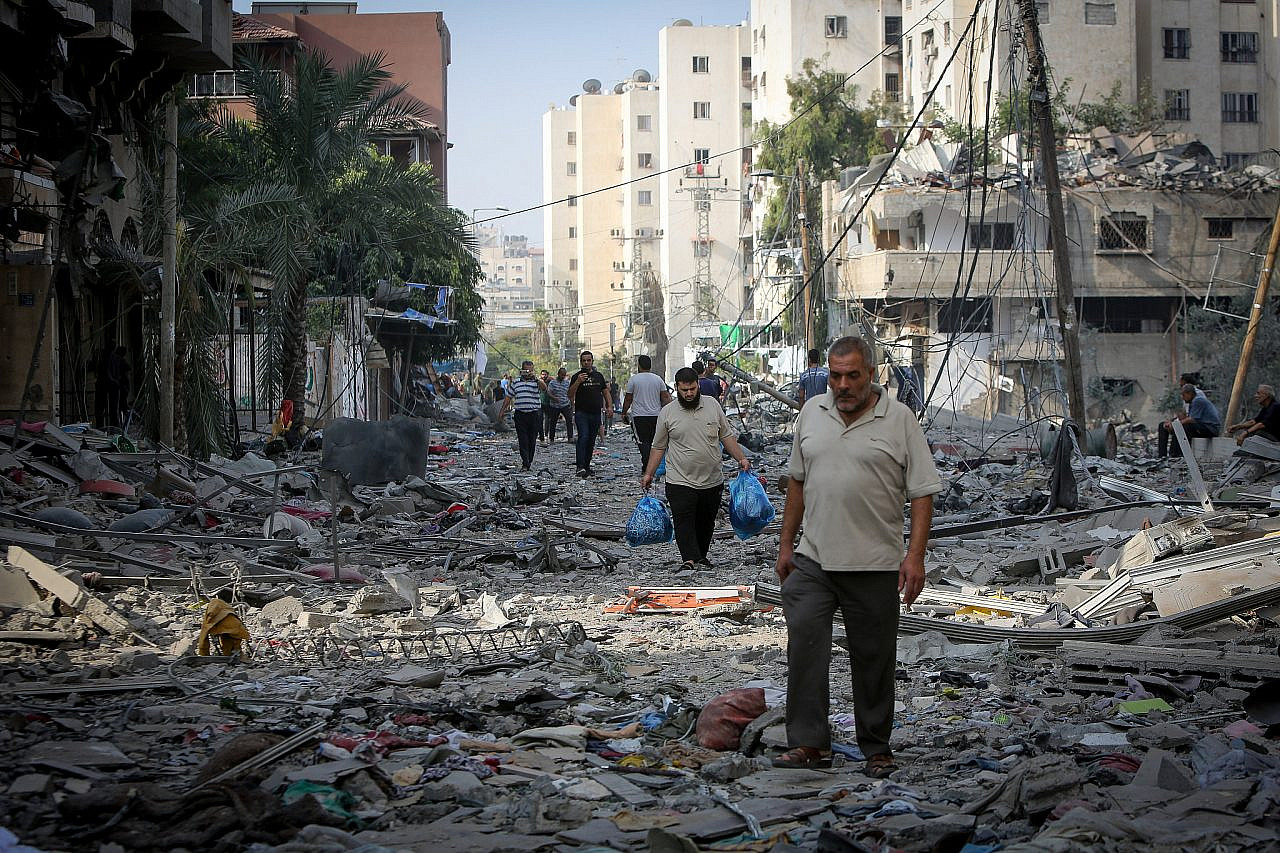
“There are no safe areas in Gaza,” al-Balbisi continued. “The shelling and destruction affected all cities and neighborhoods from the north to the south of the strip. We miraculously survived one of the Israeli airstrikes that targeted a house adjacent to where we were staying.”
Even though conditions were difficult in Gaza before this war, al-Balbisi yearns for the “calm and tranquility” of just a few weeks ago. “The residents moved easily from one area to another within the strip without obstacles and went to the markets easily,” he explained.
“Now, these things have become almost impossible,” al-Balbisi went on. “With the violence and intensity of the Israeli bombardment, moving from one place to another or going to the markets is no longer easy.” Nonetheless, he maintains hope that “Gaza will shake off the dust of war.”
‘There has not been a quiet day’
Nasser Abu Toha, 43, sits at the entrance to his house on the street next to al-Balbisi’s home. He is surrounded by a group of relatives from Beit Hanoun, in the northern Gaza Strip, who sought refuge with him. “I will not leave my house despite the lack of water and electricity,” Abu Toha said.
That is not all he’s contending with. “Israeli missiles fell near my house a few days ago,” Abu Toha continued. “As a result, the house is cracked. Despite all that, I am committed to staying in my house. There are no safe cities. All areas of the Gaza Strip are being targeted.”
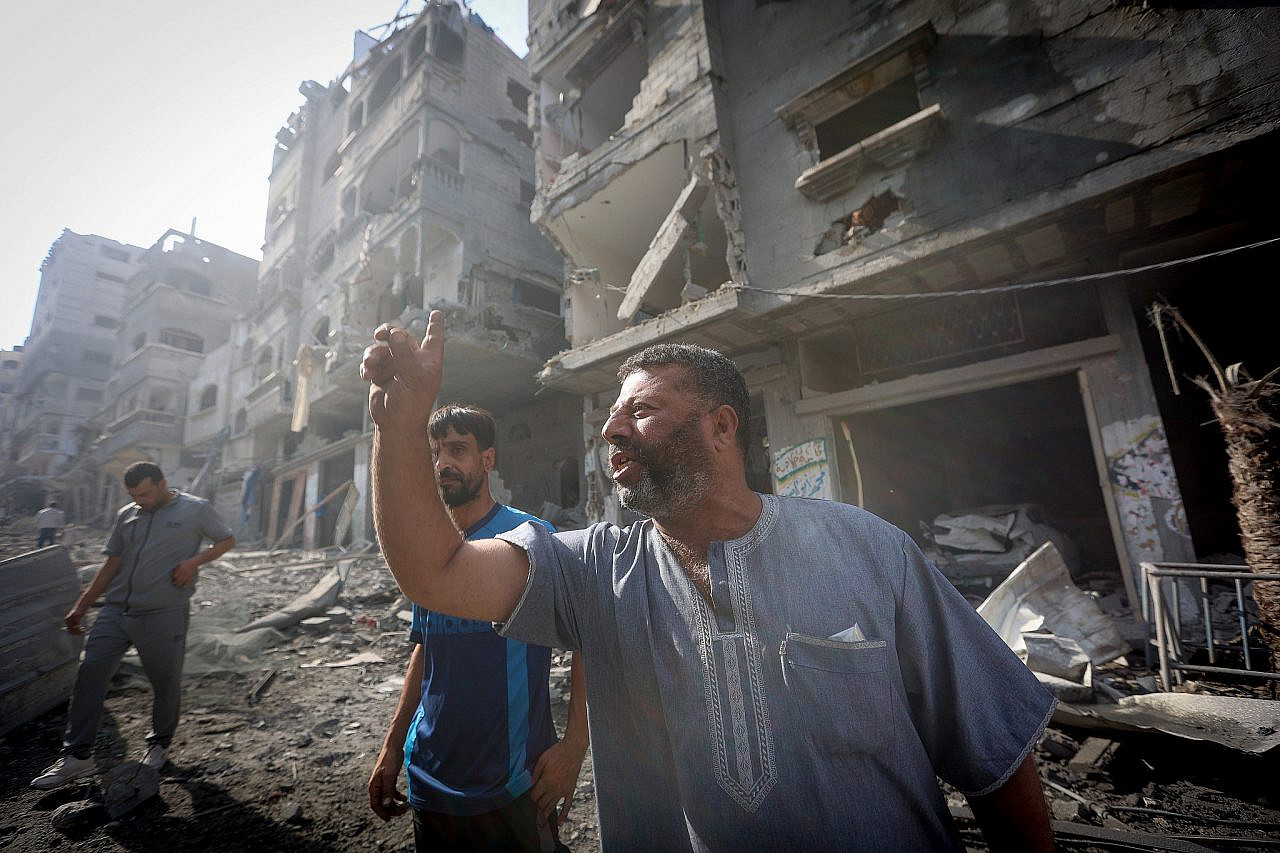
Abu Toha lives in a densely-populated neighborhood, which has experienced constant bombardment since the war broke out. “For more than two weeks, there has not been a quiet day,” he explained. “The sounds of shelling and explosions are everywhere, and the shelling has affected large areas of the neighborhood. What is happening is difficult for any human mind to comprehend. We do not know what the coming days will bring.”
The Jabalia camp market, one of the largest markets in the northern Gaza Strip, has not been spared. Israel shelled the market on Oct. 9, killing more than 50 people and causing hundreds of injuries. Yasser al-Kurdi, 46, lost his 26-year-old son, Ezz el-Din, in the attack, throwing him into deep despair.
“Due to the continuous power blackouts, my son went to the camp market next to the house to buy some food, like many residents who rush to shops and markets in such difficult conditions,” al-Kurdi said. “Less than 30 minutes after he left, I heard large explosions that shook the entire area. The information that reached us indicated that Israeli shelling had directly targeted the camp market.
“After hearing these explosions, I rushed outside,” he continued. “A huge cloud of smoke filled the market. As the cloud slowly cleared, the crime [scene] began to become clear. It was as if an earthquake had hit the place. Many children, women, and even the elderly were lying on the ground, covered in blood. Some of them were merely remains.”
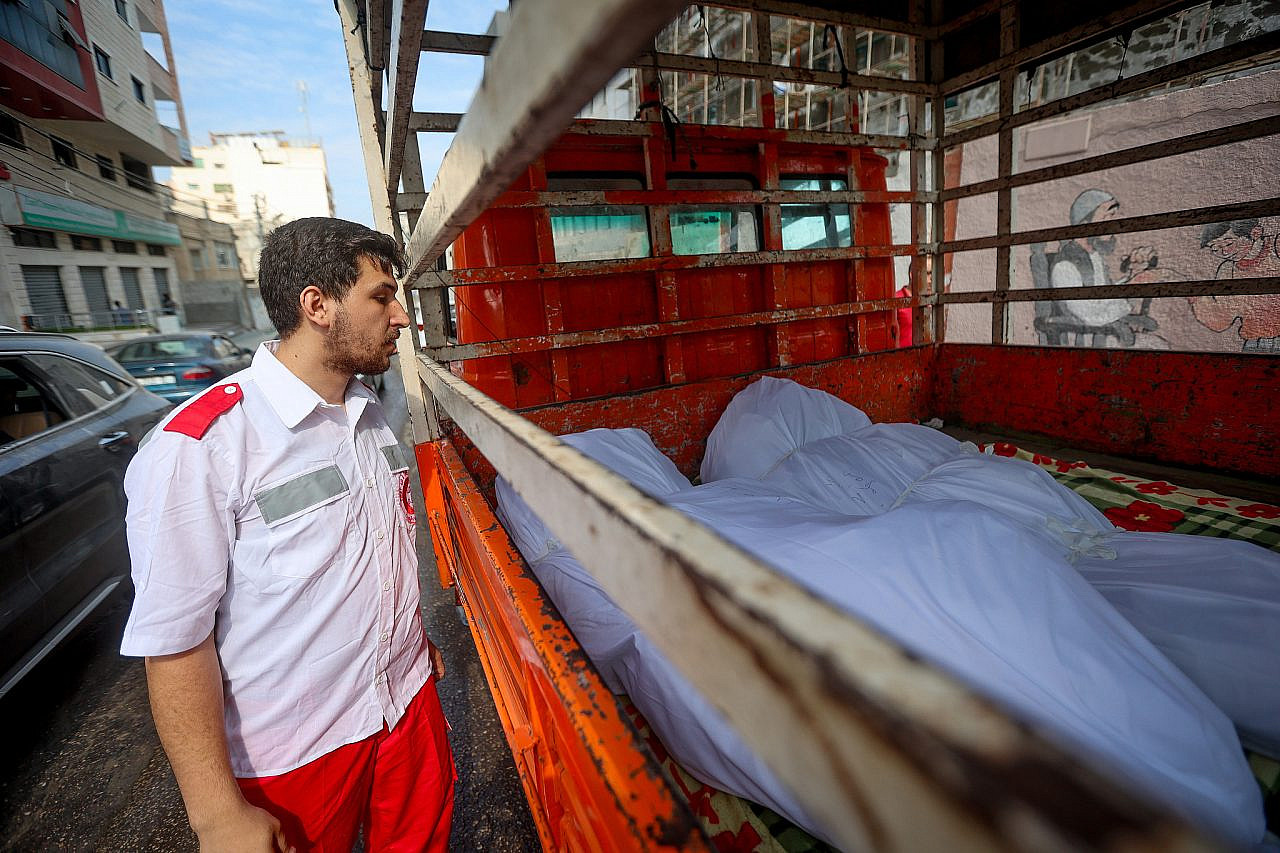
In a state of shock, al-Kurdi began searching for his son. “I found him soaked in blood under a pile of stones that covered his whole body,” al-Kurdi said. “He was lying next to some of the groceries he had just bought.”
Al-Kurdi took refuge in a classroom at a school run by the UN Relief and Works Agency, fearing his home would be destroyed. According to him, Jabalia camp and the area around it have become a ghost town as a result of intensive Israeli airstrikes and shelling.
“The war left a deep wound in my chest,” he said. “After I lost my son and witnessed the destruction and killing that did not spare the elderly or children, I now suffer from neurological and behavioral disorders that greatly affect my life.”
‘What is happening is unprecedented’
Ahmad Matar, 29, suffered a similar tragedy, losing his 33-year-old brother, Bilal, during the same shelling of Jabalia camp. “I’m living a real nightmare,” he said, and described his surviving of the shelling as “miraculous.”
“To escape the 36-hour electricity blackout, I was sitting at the entrance of our house, which is only 30 meters from the place targeted by Israeli planes,” he recounted. “My brother was working in a shop. We suddenly heard loud explosions shaking the area. Rubble and remnants of explosive missiles scattered in all directions. Because of the dust the missiles left, we could not see what [damage] they caused.
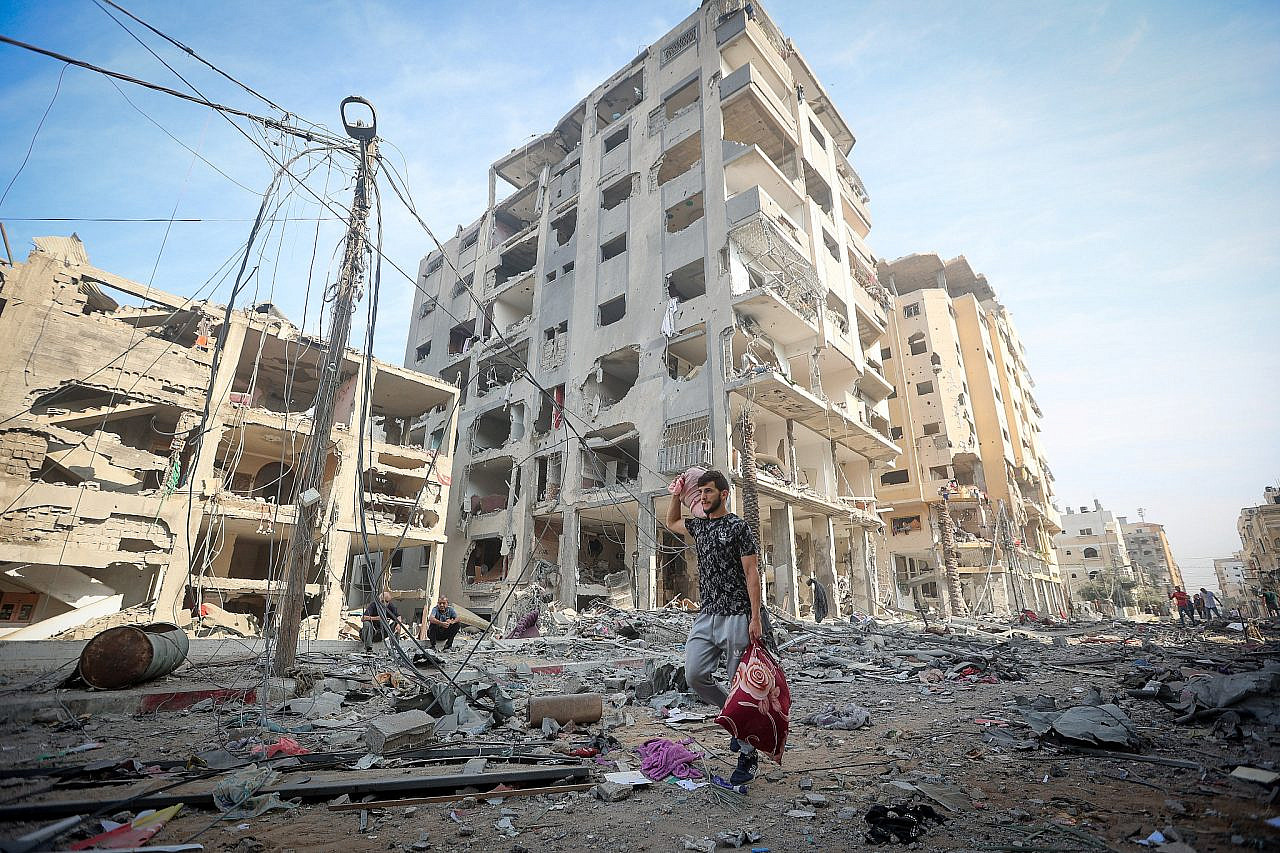
“I rushed barefoot to the place of the bombing, which includes a crowded popular market visited by all residents of northern Gaza, not just residents of Jabalia camp,” Matar continued. “Bodies and body parts of the victims were scattered across the street, as well as hundreds of wounded people covered in blood and dust.”
The extent of the bombing caused huge destruction of the market, Matar added. “It was difficult to find the shop in which my brother worked — it was completely destroyed and collapsed on everyone who was inside it. I finally found my brother lying on the ground among a large group of victims and wounded people. His body was burned, and some of his remains were scattered due to the intensity and ferocity of the missiles.”
Matar said that this war was unlike any he had experienced in the strip. “In light of the massive destruction and the large number of casualties it has caused and continues to cause, what is happening in all areas of the Gaza Strip is unprecedented. It is impossible to compare this war with other Israeli wars that the besieged enclave has witnessed for 17 years.”
Another resident of Jabalia camp who witnessed the market bombing is 43-year-old Yusry Khalil. According to him, the large number of victims meant that rescuers were forced to use donkey carts and motorbikes to transport the wounded to get treatment.
Most read on +972
Khalil called the extent of the destruction by Israel’s bombardments “a new Palestinian Nakba,” adding: “The area in which I live has become like a ghost town due to the Israeli bombardment by Israeli aircraft. I am lucky to be still alive with my family.”
Amani Mahmoud, a mental health consultant in Gaza City, told +972 that the psychological toll of Israel’s repeated wars on Gaza will need continuous treatment in order to try and stave off an extended — and extensive — mental health crisis.
“The war has caused serious and complex trauma to the population in Gaza, especially children, such as depression and involuntary urination,” she said. “These are symptoms that are difficult to treat and get rid of in the short term. In the coming period, many international institutions dealing with mental health will need to address the behavioral disorders of the people of Gaza resulting from these wars.”

